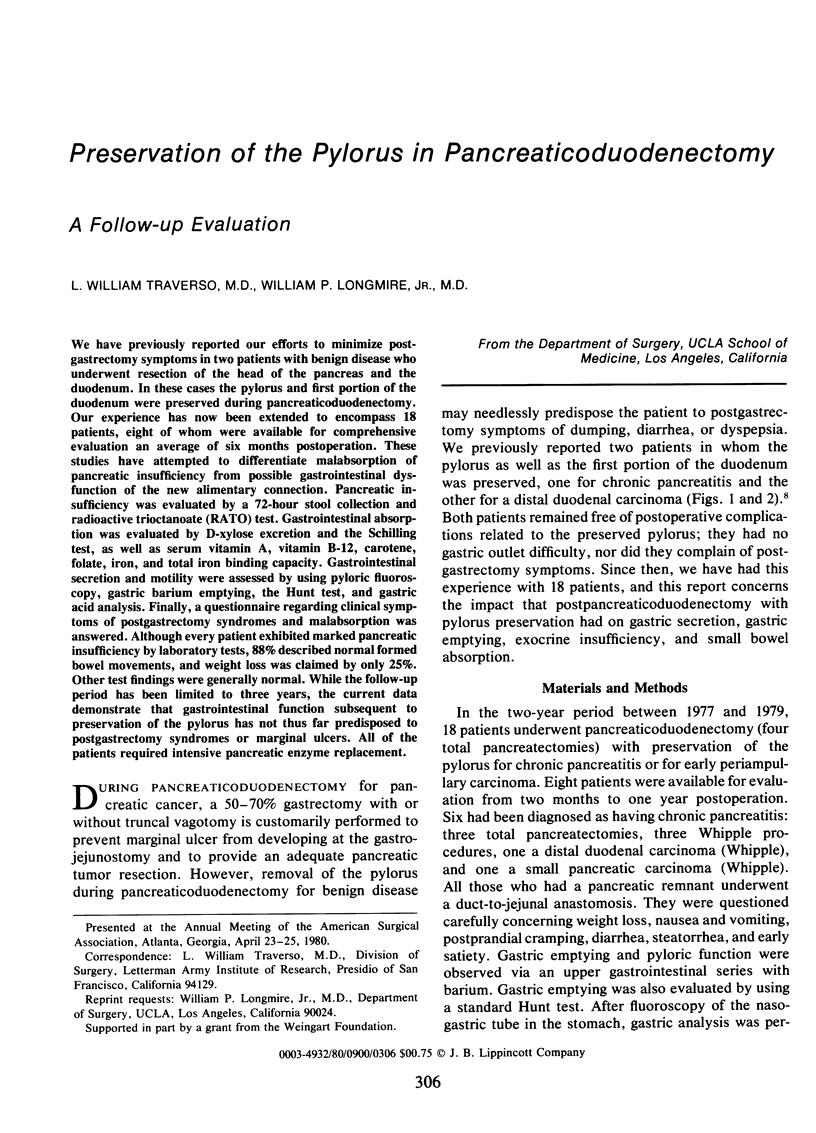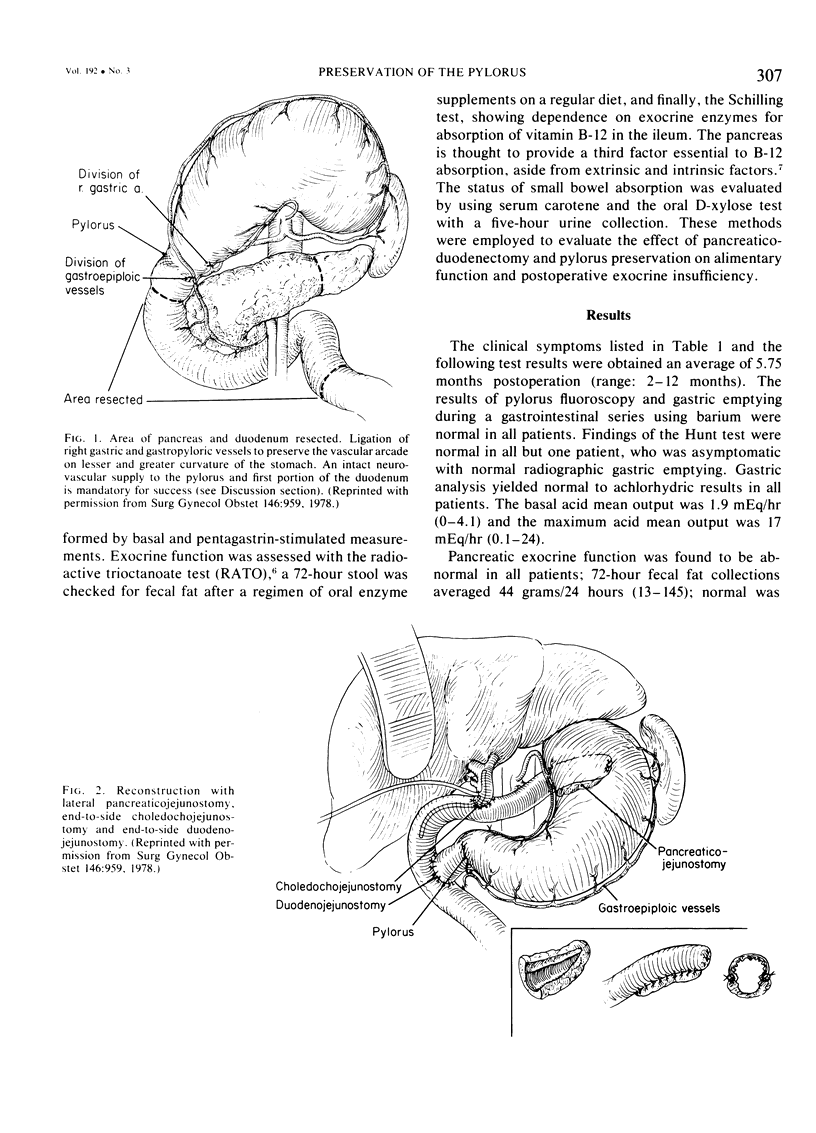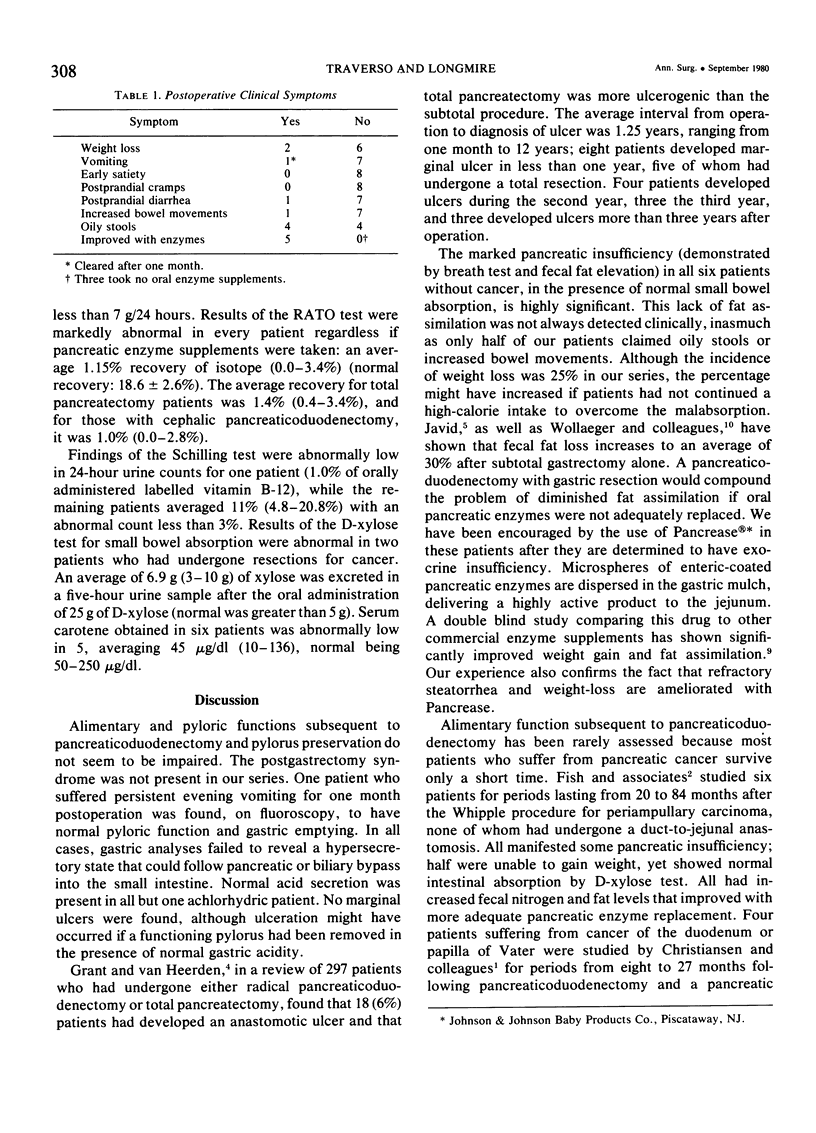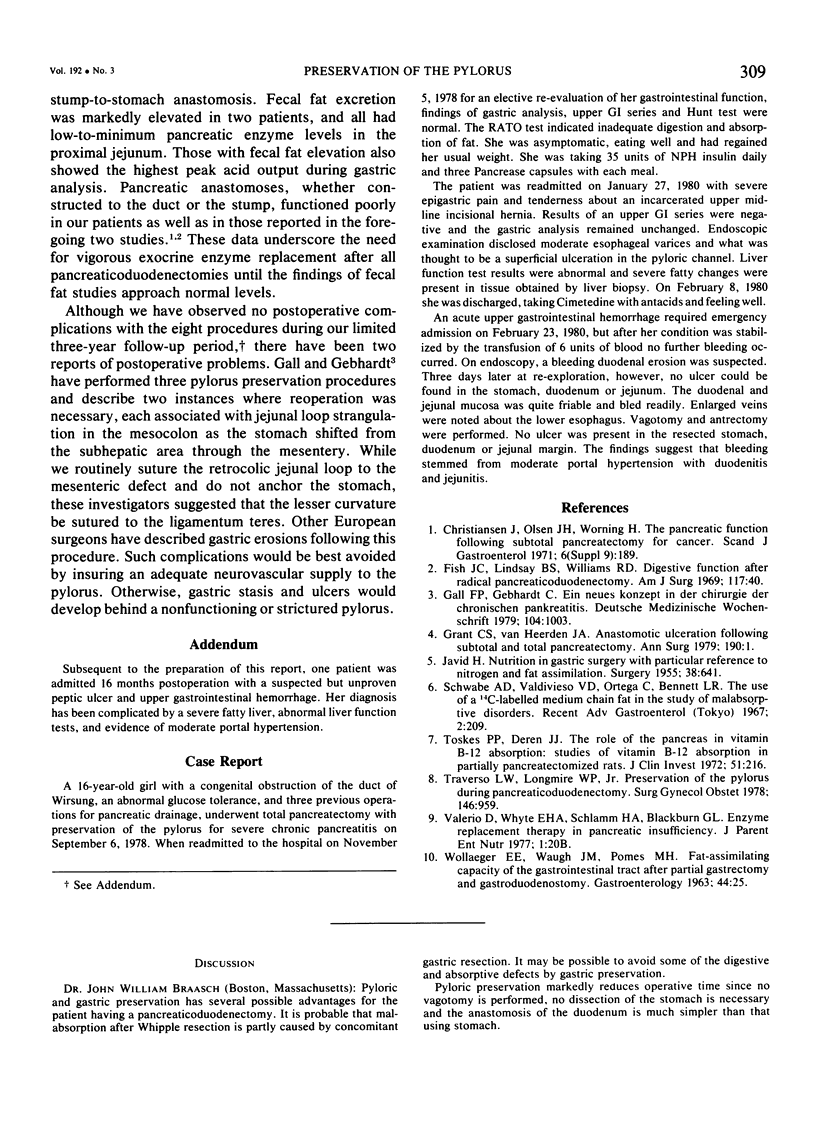Abstract
We have previously reported our efforts to minimize postgastrectomy symptoms in two patients with benign disease who underwent resection of the head of the pancreas and the duodenum. In these cases the pylorus and first portion of the duodenum were preserved during pancreaticoduodenectomy. Our experience has now been extended to encompass 18 patients, eight of whom were available for comprehensive evaluation an average of six months postoperation. These studies have attempted to differentiate malabsorption of pancreatic insufficiency from possible gastrointestinal dysfunction of the new alimentary connection. Pancreatic insufficiency was evaluated by a 72-hour stool collection and radioactive trioctanoate (RATO) test. Gastrointestinal absorption was evaluated by D-xylose excretion and the Schilling test, as well as serum vitamin. A, vitamin B-12, carotene, folate, iron, and total iron binding capacity. Gastrointestinal secretion and motility were assessed by using pyloric fluoroscopy, gastric barium emptying, the Hunt test, and gastric acid analysis. Finally, a questionnaire regarding clinical symptoms of postgastrectomy syndromes and malabsorption was answered. Although every patient exhibited marked pancreatic insufficiency by laboratory tests, 88% described normal formed bowel movements, and weight loss was claimed by only 25%. Other test findings were generally normal. While the follow-up period has been limited to three years, the current data demonstrate that gastrointestinal function subsequent to preservation of the pylorus has not thus far predisposed to postgastrectomy syndromes or marginal ulcers. All of the patients required intensive pancreatic enzyme replacement.
Full text
PDF



Selected References
These references are in PubMed. This may not be the complete list of references from this article.
- Christiansen J., Olsen J. H., Worning H. The pancreatic function following subtotal pancreatectomy for cancer. Scand J Gastroenterol Suppl. 1971;9:189–193. [PubMed] [Google Scholar]
- Fish J. C., Smith L. B., Williams R. D. Digestive function after radical pancreaticoduodenectomy. Am J Surg. 1969 Jan;117(1):40–45. doi: 10.1016/0002-9610(69)90283-9. [DOI] [PubMed] [Google Scholar]
- Gall F. P., Gebhardt C. Ein neues Konzept in der Chirurgie der chronischen Pankreatitis. Dtsch Med Wochenschr. 1979 Jul 13;104(28):1003–1006. doi: 10.1055/s-0028-1129026. [DOI] [PubMed] [Google Scholar]
- Grant C. S., Van Heerden J. A. Anastomotic ulceration following subtotal and total pancreatectomy. Ann Surg. 1979 Jul;190(1):1–5. doi: 10.1097/00000658-197907000-00001. [DOI] [PMC free article] [PubMed] [Google Scholar]
- JAVID H. Nutrition in gastric surgery with particular reference to nitrogen and fat assimilation. Surgery. 1955 Oct;38(4):641–651. [PubMed] [Google Scholar]
- Toskes P. P., Deren J. J. The role of the pancreas in vitamin B 12 absorption: studies of vitamin B 12 absorption in partially pancreatectomized rats. J Clin Invest. 1972 Feb;51(2):216–223. doi: 10.1172/JCI106806. [DOI] [PMC free article] [PubMed] [Google Scholar]
- Traverso L. W., Longmire W. P., Jr Preservation of the pylorus in pancreaticoduodenectomy. Surg Gynecol Obstet. 1978 Jun;146(6):959–962. [PubMed] [Google Scholar]
- WOLLAEGER E. E., WAUGH J. M., POWER M. H. Fat-assimilating capacity of the gastrointestinal tract after partial gastrectomy with gastroduodenostomy (Billroth I anastomosis). Gastroenterology. 1963 Jan;44:25–32. [PubMed] [Google Scholar]


